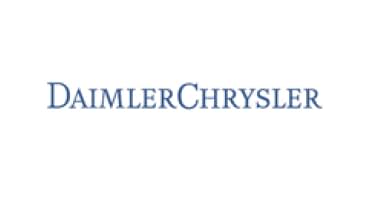Chrysler
Chrysler made asbestos-containing brakes and clutches that it used and sold to other automotive companies. The company was forced into bankruptcy in 2009 and was required to establish a trust fund for former employees.

Chrysler’s History with Asbestos
Automobile manufacturing company Chrysler Corporation was founded in 1925 by Walter P. Chrysler. Throughout the 20th century, Chrysler was a leading innovator of car parts and models.
Some of these car parts were manufactured with asbestos, including brakes and clutches. Asbestos fibers provided heat resistance to these friction products.
Workers who installed and repaired the asbestos-containing parts were exposed to asbestos. Some of them went on to file lawsuits against Chrysler, claiming they developed asbestos-related diseases from exposure to their products.
Chrysler became DaimlerChrysler Motors Company in 1998 when the company formed a partnership with Germany’s Daimler-Benz.
After nearly a decade of financial losses, Daimler sold its shares in Chrysler for $7.4 billion in 2007, according to The New York Times. The company was renamed Chrysler Holding LLC and split into two subsidiaries, Chrysler Motors LLC and Chrysler Financial Services LLC.
Chrysler was unable to financially recover, and in 2009 it filed for bankruptcy along with fellow auto giants Ford and General Motors.
The U.S. government agreed to provide $6 billion if the company partnered with Fiat. Chrysler merged with Fiat to become Fiat Chrysler Automobiles.
Today, the company’s brands include Chrysler, Dodge, Jeep, Ram, Fiat, Alfa Romeo, Maserati and Mopar (its automotive parts division).
Chrysler still has lingering financial troubles in the form of asbestos lawsuits. Since the 1980s, the automaker has contended with a high number of claims because it manufactured, used and sold automobile parts containing asbestos.
Thousands of plaintiffs diagnosed with asbestos-related diseases, including mesothelioma, have come forward, naming Chrysler as a defendant.
Chrysler Bankruptcy and Development of Trust Fund
In 2009, Chrysler was forced to file for bankruptcy and establish a trust fund to cover the health care costs of its retired employees.
In January 2010, the UAW Retiree Medical Benefits Trust launched, covering more than 860,000 members. This trust fund covers medical costs of asbestos-related diseases for former employees. It does not cover other workers who used Chrysler’s asbestos products.
During the bankruptcy process, the company attempted to transfer its active asbestos lawsuits to the bankruptcy court, reportedly hoping to attain nationwide dismissal of the claims at hearings where they planned to argue their scientific validity.
A federal judge denied Chrysler’s request and remanded all asbestos claims filed against the company to state courts in which they were filed.
The validity of future claims was not entirely cleared up in Chrysler’s bankruptcy plan. The Second Circuit Court of Appeals authorized the sale of “Old Chrysler’s” assets free and clear of any existing legal liability, including asbestos liabilities, to “New Chrysler.” But the Second Circuit declined to define the bankruptcy court’s authority to bar future asbestos claims.

Gain access to trust funds, grants and other forms of compensation for you or your loved ones.
Get Help NowAsbestos Litigation Involving Chrysler
Asbestos lawsuits naming Chrysler as a defendant have been filed by former employees of the company and automotive workers who used Chrysler’s asbestos products.
In 2007, a New York County jury awarded 73-year-old Alfred D’Ulisse $25 million in his lawsuit against Chrysler. D’Ulisse developed mesothelioma after exposure to asbestos in Chrysler’s brakes.
D’Ulisse worked at Morak Brakes in Brooklyn, New York, from 1960 to 1981, stripping linings from old brakes and replacing them. At trial, he testified, “I am on death row for a crime I did not commit.”
Evidence was presented that Chrysler knew about the dangers of asbestos and it failed to place warnings on its products. The jury found Chrysler 10% liable for damages, but because it acted “with reckless disregard for the safety of others,” the company was held liable for 80% of the verdict.
Chrysler’s Asbestos Products
Chrysler made the following asbestos-containing products:
- Brake linings
- Clutch linings
- Mopar brake linings
- Mopar clutch facings
Chrysler made asbestos-containing auto parts from 1925 through the 1970s.
Automobile brakes and clutches are among the products that still contain asbestos.
Chrysler’s Occupations at Risk
- Chrysler manufacturing plant workers
- Auto assembly line workers
- Auto mechanics
- Auto body shop workers
- Auto supply shop workers



